|
Pacific Coast Shark News 2019The following reports for 2019 are provided as a public service. They are intended to inform our visitors of current shark activities along the Pacific Coast of North America. To review Pacific Coast Shark News for 2003 click here, for 2004 click here, for 2005 click here, for 2006 news click here, for 2007 click here, for 2008 click here, for 2009 news click here, for 2010 news click here, for 2011 news click here, for 2012 news click here, for 2013 click here, for 2014 click here, for 2015 click here, for 2016 click here, for 2017 click here, and for 2018 click here.
Canoga Park, CA — For those that might not have heard, In 1982 I found the love of my life... Cindy McNeill....we shared so many wonderful adventures......her generosity, compassion, and love was unending......our 38 years together were all I could have ever hoped for.....today, July 12th, I lost my soul mate and life's partner.....God Bless you Cindy and keep you until we are together again......My son, Rocky, posted the following in her memory....
Grover Beach — On April 25, 2019 Benjamin Beckman was surfing about 150 yards from shore at Grover Beach directly in front of the entrance to Oceano Dunes Park. Grover Beach is the middle portion of Pismo State Beach in San Luis Obispo County. It was 7:50 AM and he had been on the water 45 minutes. It was overcast with a thick fog and an estimated air temperature of 60 degrees Fahrenheit. The ocean was glassy with 3 – 4 foot waves over a sandy bottom 7 - 10 feet and an estimated temperature of 55 degrees Fahrenheit. There were two adult pinnipeds observed out pasted the breaking waves with a smaller individual in the troughs between the sandbars. Beckman reported: "The shark slowly swam 5 – 10 feet from me and a Stand Up Paddle boarder. The SUP rider was able to get a good size estimate from his vantage point above the shark. Initially, it was him who actually drew my attention to the portion of the shark's dorsal fin, 3 – 4 inches, that was slightly exposed above the sea surface. Before the sighting, the SUP rider was standing on his board, without paddling, and I was seated on my board, gently treading the water with my feet and my hands so as to get into better position for the next wave. Upon sighting the shark, I slowly and calmly stroked in towards the sandbar, while the paddle boarder stayed where he was. When the next wave came, I quickly paddled and rode it in, while the paddle boarder stayed out, waiting for the next set before coming in to the beach. The movement of the shark did not change at all and according to the SUP rider, it calmly swam in a side to side motion down the beach, without changing direction, headed towards the Pismo Beach Pier. The juvenile Great White Shark was dark gray and 6 – 7 feet in length." Please report any shark sighting, encounter, or attack to the Shark Research Committee.
Santa Barbara — On April 19, 2019 Kris Moore reported: "The Santa Barbara Harbor Patrol received two 'credible' reports of shark sightings near East Beach, which is located near Stearn's Wharf in Santa Barbara. The first notice came Thursday near Bath House on East Beach when a previously tagged shark set off a detection device on a offshore buoy. The shark two years ago had been measured at 9 feet. The second sighting came Friday just before 1:00 PM when a swimmer observed a small Great White Shark 20 feet from shore." Please report any shark sighting, encounter, or attack to the Shark Research Committee.
Emma Wood State Beach — On April 18, 2019 Chad Everard reported; "I live in Ventura and commute to Santa Barbara each day. I saw a White Shark attacking something in the ocean off Emma Wood State Beach between the Ventura River and southerly Emma Wood State Beach campground at 4:00 PM today. It was creating a large circular splash when it caught my eye and it then breached. It was a very large White Shark I’d say 15 – 20 feet in length. it was chasing a prey on the surface and breached three times while chasing it. It was a few hundred feet outside the beach and definitely not a Whale or a Thresher Shark. It had a dark grey back and was charging around aggressively. This is the second time I’ve seen a White Shark from the 101 Freeway. The last one was a smaller White Shark that jumped vertically at Solimar State Beach about a year ago but it was a smaller, around 10 feet in length." Please report any shark sighting, encounter, or attack to the Shark Research Committee.
Bolsa Chica State Beach — On February 23, 2019 Ana Rahlves was surfing 75 – 100 feet from shore with an undetermined number of surfers near Tower 17 at Bolsa Chica State Beach located north of Huntington Beach in Orange County. It was 9:30 AM and she had been on the water about 1 hour. Air and water temperatures were estimated in the low 50s Fahrenheit. The ocean was calm with a small surf and very murky water limiting the visibility. No marine mammals were observed in the area. Rahlves reported; "I was on my board when I observed a shark swam close to several surfers that were in the line up about 6 feet from me. When I noticed the dark grey fin it was pretty close to my board, around 2 feet from me. It slowed down next to my board, then continued swimming north, parallel to the beach. I stayed pretty quiet trying to keep myself over the board and not making any sudden movements. Using my board for comparison, i would estimate the shark to be about 7 feet in length." Please report any shark sighting, encounter, or attack to the Shark Research Committee.
Huntington Beach — February 18, 2019 Joel Smith and his father, Scott and Uncle, were surfing about 150 feet from shore at 'Dog Beach' in Huntington Beach. It was 8:15 AM and they had been on the water 45 minutes. The sky was clear with a light breeze and an estimated air temperature of 55 degrees Fahrenheit. The ocean was calm with 3 – 4 foot waves and an estimated temperature of 55 degrees Fahrenheit. Water visibility was limited to only about 2 feet. No marine mammals were observed in the area. Smith reported; "I was lying down on my board facing away from shore out to sea when I saw the shark swam by my right side about 1 foot away. It was swimming toward my father, Scott, who was sitting on his surfboard approximately 20 feet further away from the shore. My father was also facing away from shore. It came within 1 foot of my father's left leg, approximately 1 foot from the surface, when it came to the surface sticking its head out of the water. My father saw it and moved his leg quickly, upon his movement, the shark quickly changed direction and turned back toward me, while I was turning my board toward shore to paddle in. It bumped my left leg (back of the leg, near the knee) as I began to paddle toward shore. The shark was dark grey and 6 – 7 feet in length. I was hit with enough force to almost knock me off my board, but not enough to create any pain. I paddled in quickly and did not experience any additional encounters. My father and uncle paddled to shore about 5 – 15 minutes after I came in. They did not know I was bumped by the shark." Please report any shark sighting, encounter, or attack to the Shark Research Committee
Pacific Coast Shark Attacks During 2018There were 5 authenticated unprovoked shark attacks reported from the Pacific Coast of North America during 2018, with none fatal. The 5 attacks were all recorded from California. The attacks were distributed in the following months; June (1), August (1), September (2), and October (1). There were 3 shark attacks reported from Southern California, with the remaining 2 attacks north of San Luis Obispo County. Activities of the victims were; Kayaking (1), Paddleboarding (1), Diving (2) and Swimming (1). The Great White Shark, Carcharodon carcharias, was positively identified or highly suspect in all 5 of the attacks. The publication “Shark Attacks of the Twentieth Century” authenticated 108 unprovoked shark attacks from the Pacific Coast between 1900 and 1999. The Great White Shark was implicated in 94 (87%) of the 108 confirmed attacks with an annual average of slightly more than one shark attack per year. The 5 cases reported for 2018 brings the total number of unprovoked shark attacks occurring along the Pacific Coast during the 21st Century to 108. This is ‘six times’ the Twentieth Century annual average of slightly more than one shark attack per year. The Great White Shark was positively identified or highly suspect in 97 (90%) of the 108 attacks recorded during the 21st Century. From 2000 to the present, 55 (51%) of the 108 confirmed shark attacks occurred during the three month period of August (17), September (15) and October (23). Victim activity for the 108 shark attacks reported from the Pacific Coast since 2000 are distributed in the following ocean user groups; surfing 62 (57%), kayaking 18 (17%), swimming 9 (8%), diving 8 (7%), paddleboarding 7 (6%), outrigger 2 (1%), windsurfing 1 (1%), fishing 1 (1%) and boogie boarding 1 (1%). There have been 216 authenticated unprovoked shark attacks reported from the Pacific Coast of North America from 1900 thru 2018. The Great White Shark was positively identified or highly suspect in 191 (88%) of the 216 cases. There were 8 fatal shark attacks confirmed from 1900 to 1999 and 5 fatal attacks reported from 2000 to 2018. The 13 fatal attacks represent 6% of the 216 total cases. The number of shark-bitten stranded marine mammals reported in 2018 was greater than the prior year. The location and time of year, would suggest an increase in the number of Great White Sharks utilizing those specific areas. However, the frequency of Great White Shark encounters and observations might be attributable to population dynamics of humans and sharks. The Shark Research Committee will continue to closely monitor these activities.
|
||||||||||||||||
|
|
|

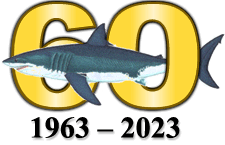
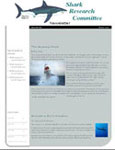
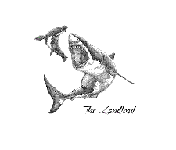
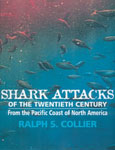
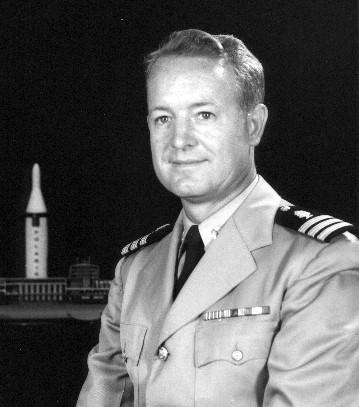 H. David Baldridge October 17, 1924 – January 4, 2019
H. David Baldridge October 17, 1924 – January 4, 2019